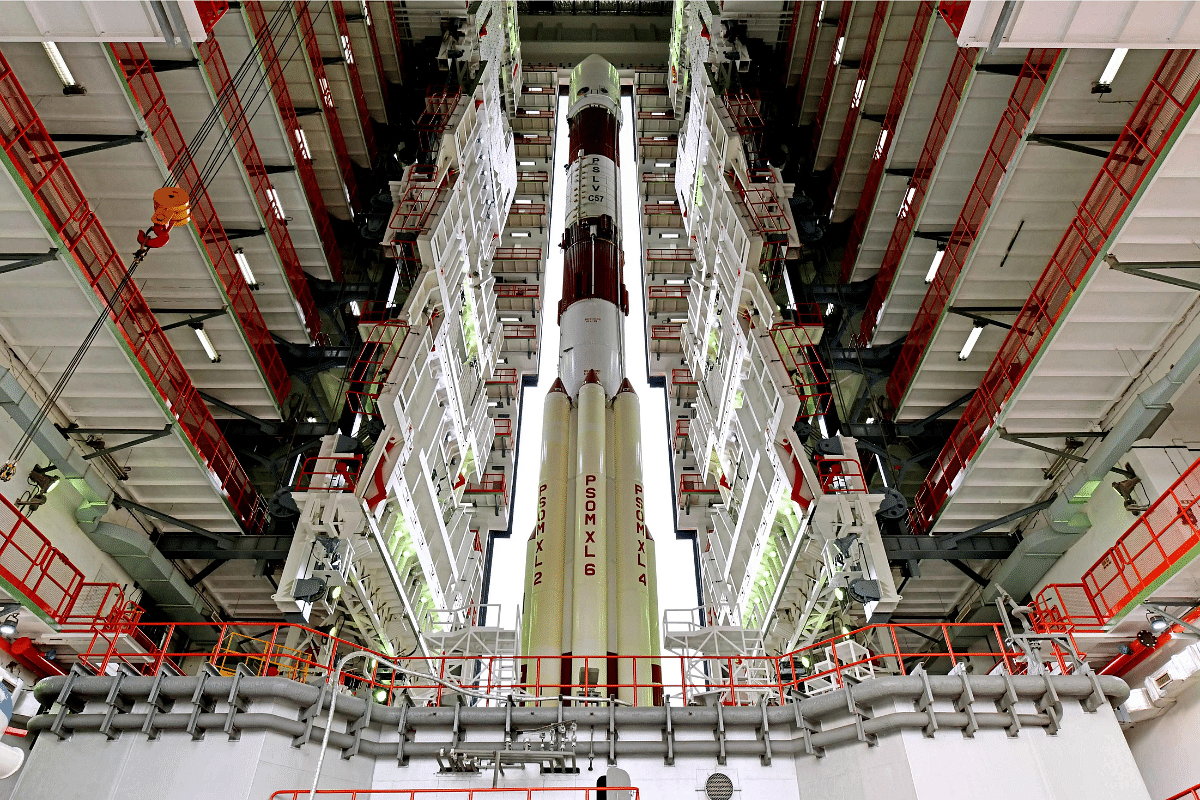Science
Aditya-L1: Countdown In Progress For Launch Of India's Space-Based Mission To Study The Sun

The PSLV rocket that will carry Aditya-L1 to the skies
The countdown for Aditya-L1 launch has commenced, ISRO said Friday (1 September).
Aditya L1 is India's first space-based mission dedicated to the study of the Sun.
The 23-hour-40-minute countdown leading to the launch Saturday (2 September) at 11.50 am began at 12.10 pm on Friday.
The launch will be telecast live on all ISRO digital channels (scheduled YouTube video below) as well as the DD National TV channel at 11.20 am.
A polar satellite launch vehicle, specifically the PSLV XL rocket, will lift off with the Aditya-L1 spacecraft from the Satish Dhawan Space Centre-Sriharikota Range (SDSC-SHAR) on Saturday.
ISRO will send the solar spacecraft about 15 lakh kilometres away from Earth, to a gravitational sweet spot called the Lagrange point 1, or L1, of the Sun-Earth system.
Aditya-L1 will first be placed in low-Earth orbit and then subsequently in increasingly elliptical orbits before the firing of the onboard propulsion launches the spacecraft towards L1.
Ultimately, the solar probe will be injected into a large halo orbit around L1.
From Earth to L1, Aditya-L1’s journey will take about four months.
“A satellite placed in the halo orbit around the L1 point has the major advantage of continuously viewing the Sun without any occultation/eclipses,” ISRO says. “This will provide a greater advantage of observing the solar activities and its effect on space weather in real time.”
The Aditya-L1 mission seeks to enable a deeper understanding of the Sun, including such aspects as coronal heating and solar wind acceleration, coupling and dynamics of the solar atmosphere, solar wind distribution and temperature anisotropy, and initiation of coronal mass ejection, flares, and near-Earth space weather.
Seven payloads will piggyback on Aditya-L1 for the purpose. Four of them will carry out remote sensing of the Sun, while the other three will carry out in-situ observation.
“Using the special vantage point L1,” explains ISRO, “four payloads directly view the Sun and the remaining three payloads carry out in-situ studies of particles and fields at the Lagrange point L1, thus providing important scientific studies of the propagatory effect of solar dynamics in the interplanetary medium.”
The remote sensing payloads are the Visible Emission Line Coronagraph (VELC), Solar Ultraviolet Imaging Telescope (SUIT), Solar Low Energy X-ray Spectrometer (SoLEXS), and High Energy L1 Orbiting X-ray Spectrometer (HEL1OS).
The three payloads carrying out in-situ observations are the Aditya Solar wind Particle Experiment (ASPEX), Plasma Analyser Package For Aditya (PAPA), and Advanced Tri-axial High Resolution Digital Magnetometers.
The Aditya-L1 mission partners are the Indian Institute of Astrophysics (IIA Bengaluru), the Inter-University Centre for Astronomy and Astrophysics (IUCAA Pune), Physical Research Laboratory (PRL Ahmedabad), and various ISRO centres.
Also Read:
Support Swarajya's 50 Ground Reports Project & Sponsor A Story
Every general election Swarajya does a 50 ground reports project.
Aimed only at serious readers and those who appreciate the nuances of political undercurrents, the project provides a sense of India's electoral landscape. As you know, these reports are produced after considerable investment of travel, time and effort on the ground.
This time too we've kicked off the project in style and have covered over 30 constituencies already. If you're someone who appreciates such work and have enjoyed our coverage please consider sponsoring a ground report for just Rs 2999 to Rs 19,999 - it goes a long way in helping us produce more quality reportage.
You can also back this project by becoming a subscriber for as little as Rs 999 - so do click on this links and choose a plan that suits you and back us.
Click below to contribute.
Latest